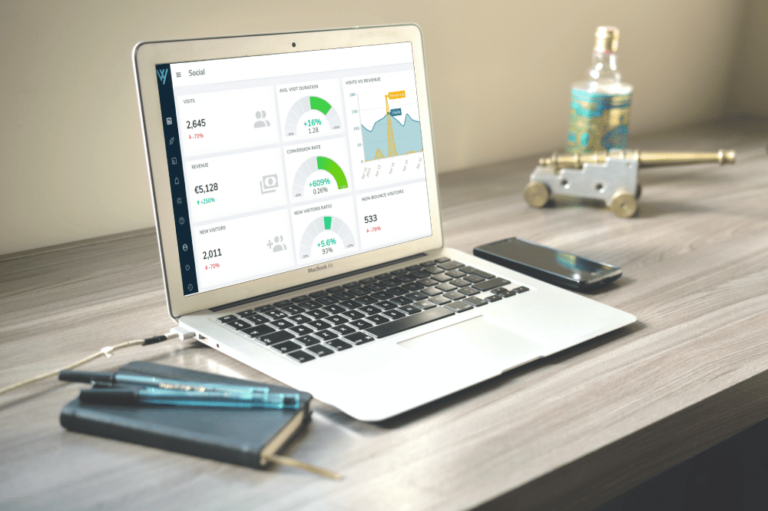Machine Learning: A Significant Leap towards Predictive Marketing
According to Salesforce’s report on the state of marketing in 2017 [1], 60% of French marketers currently employ artificial intelligence (AI) tools, particularly for delivering product recommendations and predicting customer or prospect behavior. Predictive marketing, which involves leveraging data-driven modeling to anticipate consumer behavior, has become crucial in supporting various industries in their operational decision-making.
In our previous article, we explored the increasing influence of machine learning techniques, which are gaining momentum in the advertising sector to enhance predictive marketing.
Predictive Marketing: A Term on the Rise According to Google Trends
It’s evident that machine learning, powered by advertising industry data, can handle vast amounts of detail and provide valuable insights, especially concerning precise targeting, auction price adjustments, placement choices, and operational recommendations for improving the media mix. It’s not rocket science: by constructing models based on historical data from numerous users, it becomes possible to predict the behavior of similar users, enabling the delivery of the most effective message at the optimal time.
By utilizing machine learning algorithms, marketing decision support platforms can offer significantly more precise operational recommendations. These algorithms only require sufficient datasets to generate forecasts that account for all the unique characteristics of the data. These technologies empower marketing teams to leverage forecasts and conduct simulations, gaining a better understanding of their media mix’s evolution without the need for extensive training in media mix modeling.
These forecasts can address a wide range of marketing challenges. Here are a few examples of tasks automated by machine learning in predictive marketing, showcasing its potential:
Accurate Segmentation and Enhanced Targeting with Machine Learning
In 2017, users have high expectations regarding the quality and speed of content display on both mobile and desktop platforms. Advertisements must adapt to these requirements to capture and retain users’ attention. Teaching algorithms to associate ad A with a specific group of people X, thereby optimizing the number of interactions, represents a major challenge for machine learning in digital advertising. By analyzing users’ browsing history, it becomes possible to predict completion rates for thematic videos or visit and purchase rates.
Dynamic Creative Optimization (DCO) is a real-time banner customization technique used by programmatic actors to optimize conversion rates. Apart from generic adaptations based on user location or time of day, this technique identifies preferences in terms of colors or specific graphic elements that users are most receptive to, based on predictions. This enables the display of banners tailored to personal preferences, a strategy further empowered by advanced image recognition algorithms.
As individual-level intention prediction becomes more precise, algorithms can recognize and propose images directly associated with the products users intend to purchase. This perfect combination enables advertising messages to be precisely targeted to individual internet users.
Advertising Auction Price Determination
The application of machine learning algorithms in display or search auction strategies has become one of the most prevalent uses today. Campaigns, constrained by limited budgets, rely on algorithmic recommendations to optimize purchases from the most qualified locations for the most interested groups of people. Human intervention during purchase transactions, completed in less than a second, is limited, while advanced artificial algorithms provide programmatic platforms with a crucial competitive advantage.
Multi-Channel Budget Allocation with Machine Learning
By leveraging historical data, accurate simulations of budget changes’ impact on business outcomes can be created. Will reallocating the budget from a TV campaign to an online video campaign affect the ROI? How will revenue vary after a complete divestment from social networks? Forecasting media budgets remains a complex task for traditional algorithms due to multiple factors at play, including inter-channel interactions, current location prices, seasonality, and the advertiser’s media mix distribution. Machine learning simplifies this exercise, although attention must be paid to the volume of data available during the learning phase. More factors and a richer media mix require larger datasets to maintain the highest prediction probability.
Discover Wizaly’s Smart Budget Planning Assistant – Request a demo today!
Prediction of Customer Churn and Customer Lifetime
Traditional consumer churn prediction models are reasonably accurate, but their application often lacks speed in taking immediate action to prevent loss. Machine learning makes it possible to identify behavior patterns indicating user disinterest weeks in advance. This enables marketing actions to be adapted based on early signs of disinterest, allowing personalized marketing actions such as new messaging or tailored promotional offers to be deployed, ultimately preventing churn. Moreover, it becomes possible to prioritize actions that increase turnover based on predictions of customer lifetime value, as algorithms learn to balance efforts to retain former consumers with those to attract new ones.
While the predictions become highly accurate for all these issues, human intervention remains necessary to explain the observed phenomena. The algorithms rely on predictive models rooted in pure statistical significance and lack the ability to “explain” the causal link between events.
On the other hand, the time saved by these tools is a significant advantage for marketing teams. They can leverage insights from trained learning algorithms and integrate multiple tools to activate the right levers directly based on algorithmic recommendations. Depending on budget forecasts, the Data Management Platform can activate recommended targeting to specific audiences, programmatic platforms can purchase DCO placements at optimal prices, and personalized messages can be delivered based on customer lifetime value.

Ready to experience the power of machine learning in optimizing your marketing efforts? Schedule a demo of Wizaly’s Smart Budget Planning Assistant today and discover how it can revolutionize your marketing strategies. Click here to request your personalized demo now!



